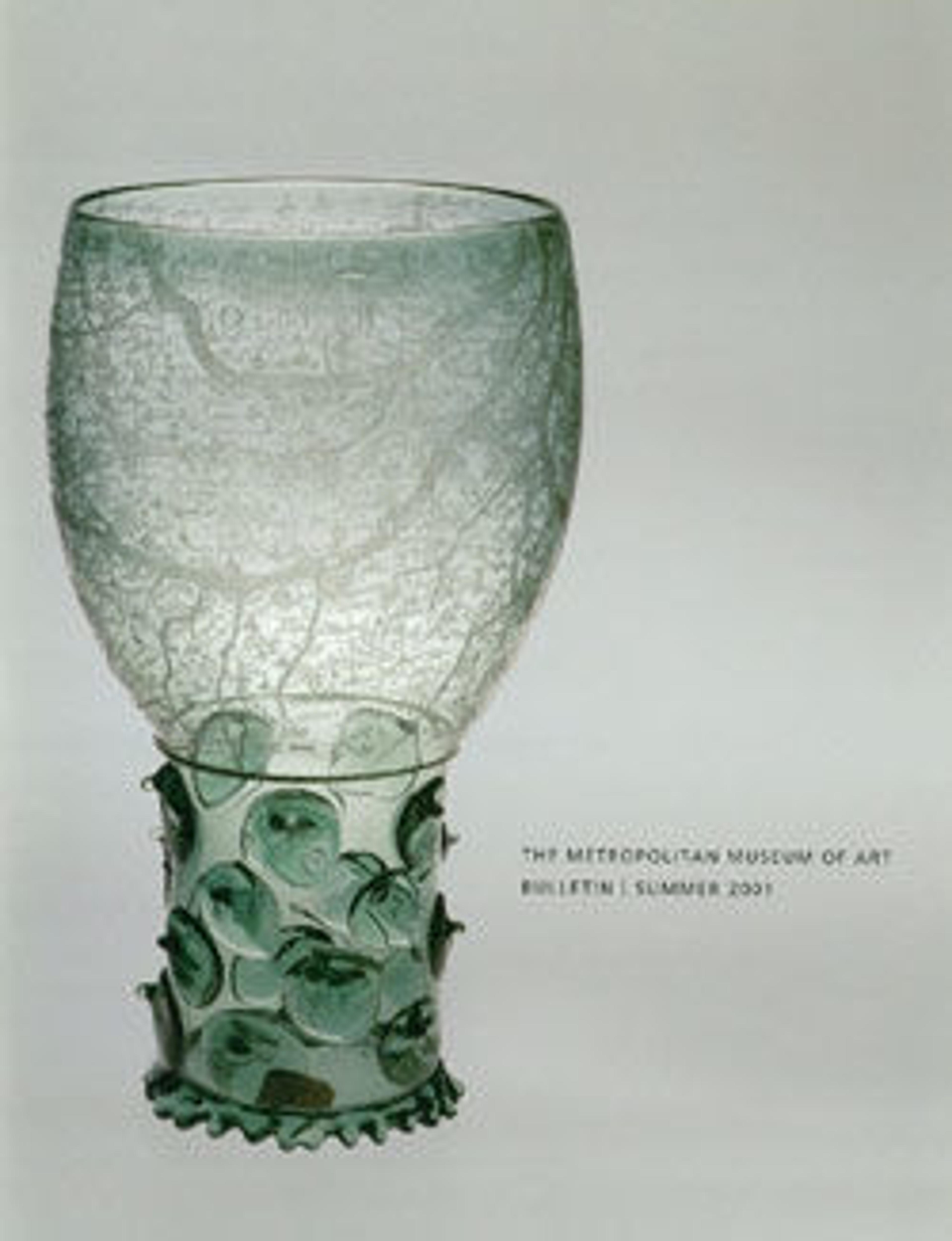Inlays and Shrine Elements
In temples, statuettes of Egyptian gods were housed in small shrines, from which they emerged for rituals. Gods also had processional barks that carried shrines in which the god remained concealed during processions within and outside the temple. Wood shrines densely inlaid with figural, hieroglyphic, and decorative glass elements are attested from the late sixth century B.C. onward. Inlay elements might be placed in separate cells or be contiguously adhered on a common background. Most such shrines are, however, only known from the jumbled masses of elements preserved in temple deposits after the shrine(s) in the deposit had decayed.
This imagined scene draws from a large group of fine, monochromatic and mosaic glass inlays that were purchased together. From the same aggregation come column drums, bronze bolts appropriately in the form of a "door bolt" and "union" hieroglyphs, a square bronze rod, and four bronze attachments. The lot also included bits of gilded plaster.
For more information, see the Curatorial Interpretation below.
Link to a blog about Ptolemaic Art at The Met
Nile and Newcomers: A Fresh Installation of Egyptian Ptolemaic Art
This imagined scene draws from a large group of fine, monochromatic and mosaic glass inlays that were purchased together. From the same aggregation come column drums, bronze bolts appropriately in the form of a "door bolt" and "union" hieroglyphs, a square bronze rod, and four bronze attachments. The lot also included bits of gilded plaster.
For more information, see the Curatorial Interpretation below.
Link to a blog about Ptolemaic Art at The Met
Nile and Newcomers: A Fresh Installation of Egyptian Ptolemaic Art
Artwork Details
- Title: Inlays and Shrine Elements
- Period: Late Period–Ptolemaic Period
- Date: 380–30 B.C.
- Geography: From Egypt
- Medium: Glass, cupreous metal
- Dimensions: various measurements for group
- Credit Line: Rogers Fund, 1921
- Object Number: 21.2.2-related
- Curatorial Department: Egyptian Art
More Artwork
Research Resources
The Met provides unparalleled resources for research and welcomes an international community of students and scholars. The Met's Open Access API is where creators and researchers can connect to the The Met collection. Open Access data and public domain images are available for unrestricted commercial and noncommercial use without permission or fee.
To request images under copyright and other restrictions, please use this Image Request form.
Feedback
We continue to research and examine historical and cultural context for objects in The Met collection. If you have comments or questions about this object record, please contact us using the form below. The Museum looks forward to receiving your comments.
